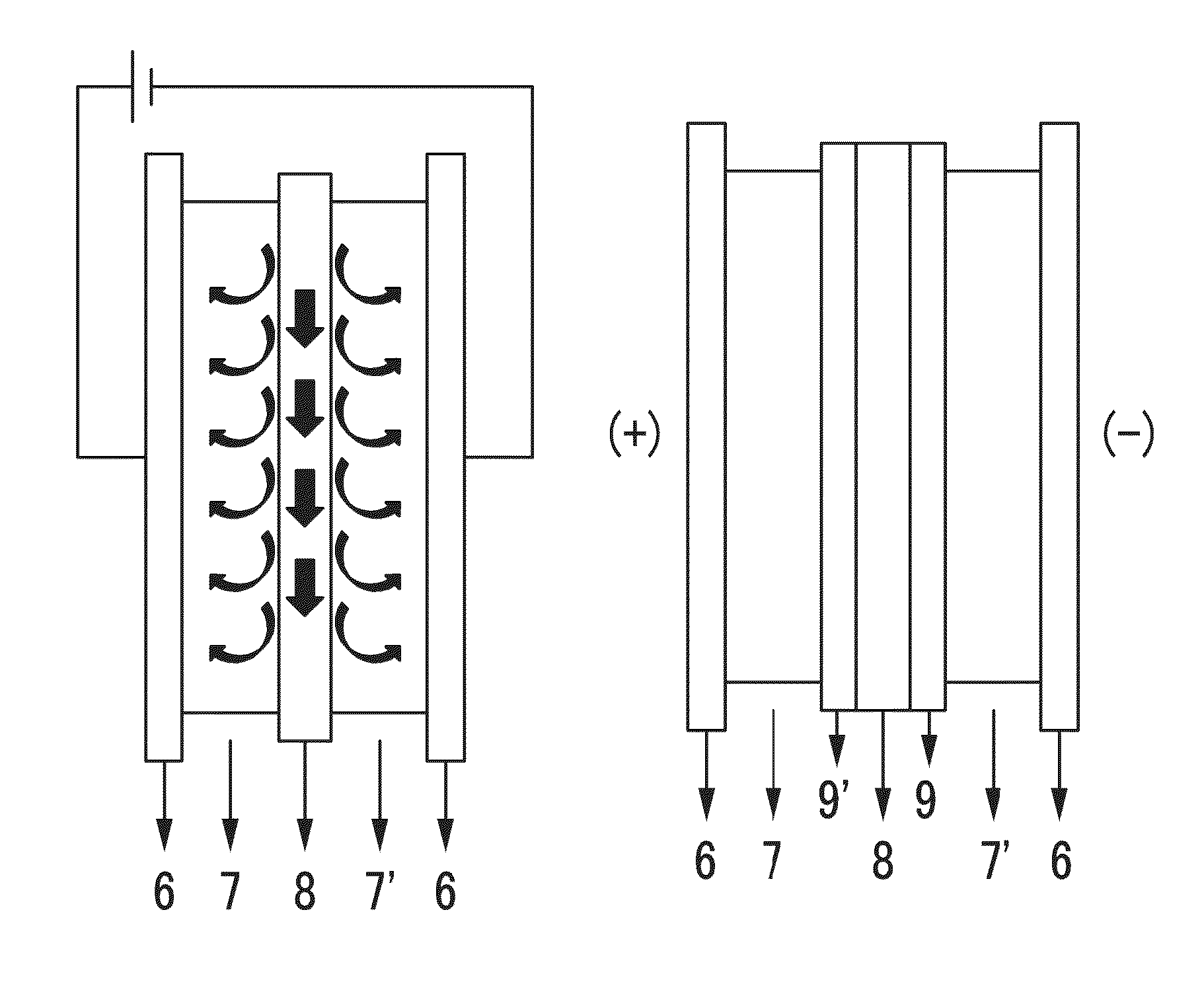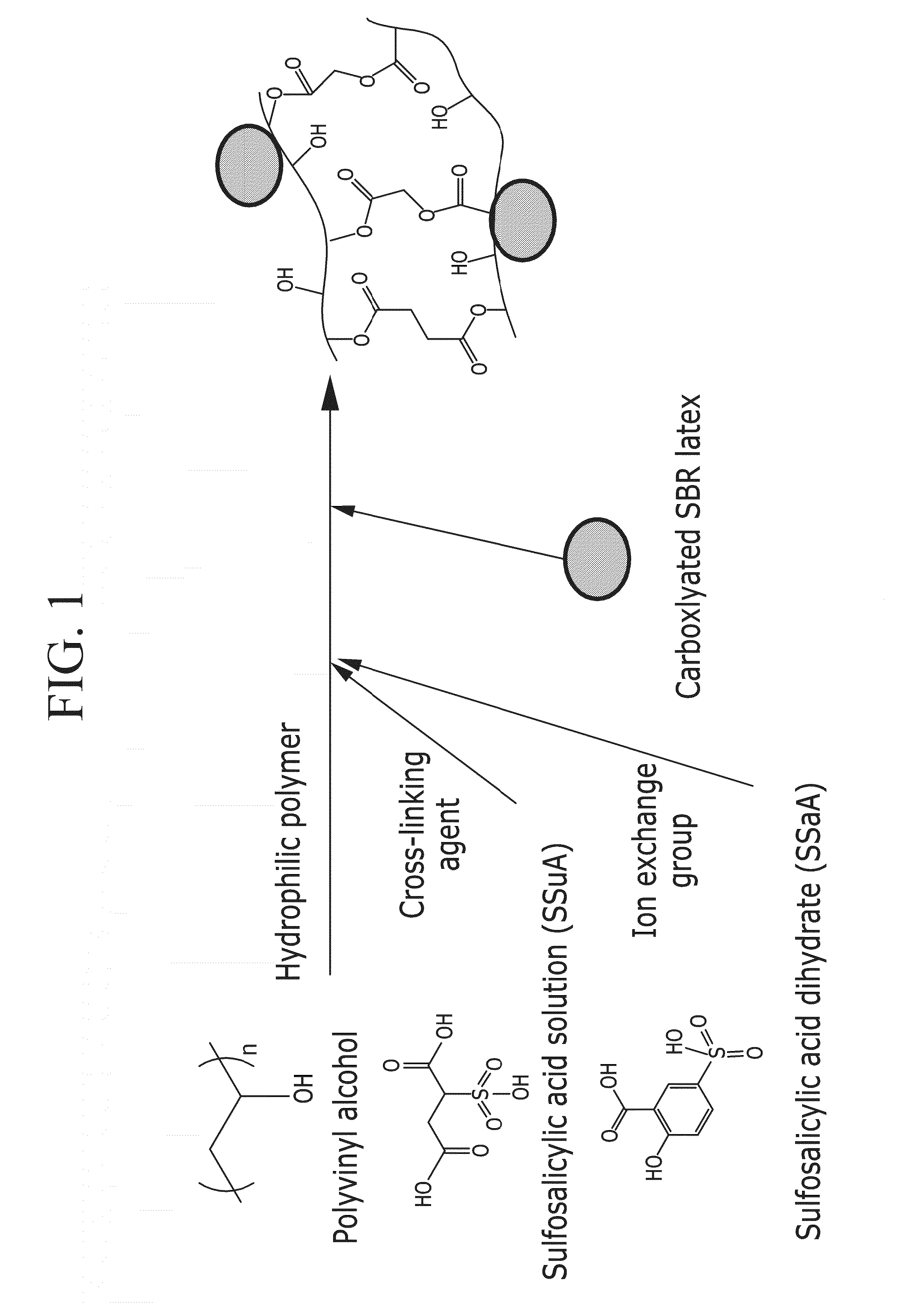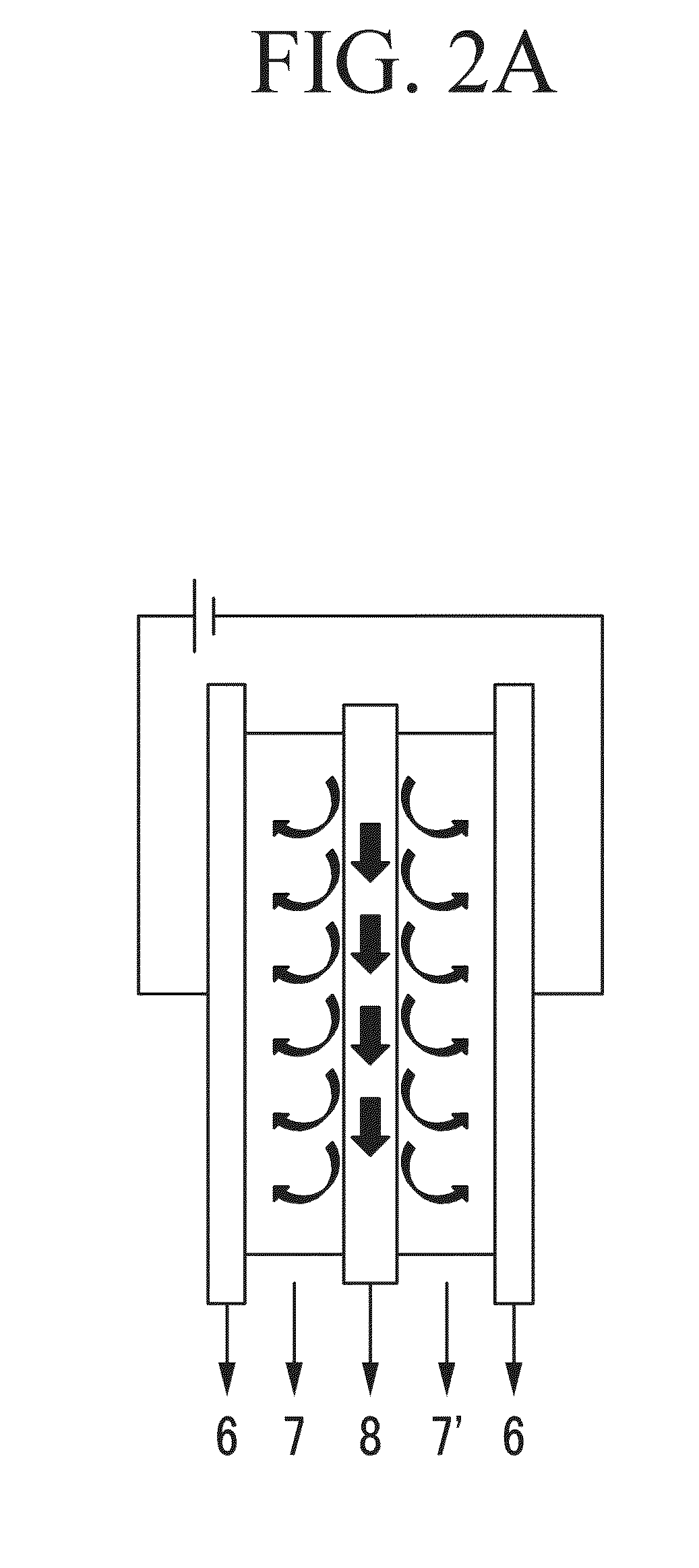Composition for electrode of capacitive deionization apparatus and electrode including same
- Summary
- Abstract
- Description
- Claims
- Application Information
AI Technical Summary
Benefits of technology
Problems solved by technology
Method used
Image
Examples
preparation example 1
Manufacture of Cathode for Capacitive Deionization Apparatus (CDI)
[0108]A cathode as a counter electrode for the anodes according to Examples 6 to 13 is manufactured in the following method.
[0109](1) First, in order to prepare a binder, 2.1 g of glycidyl trimethylammonium chloride (GTMAC) is added to 12.6 g of a PVA 10% aqueous solution, and the mixture is agitated.
[0110](2) 0.45 g of Super-P as a conductive agent and 3 g of activated carbon are added to the prepared polymer solution, and the mixture is agitated with a Thinky mixer for 10 minutes.
[0111](3) 0.72 g of glutaric acid as a cross-linking agent is injected into the prepared slurry, and the mixture is agitated with a Thinky mixer for 10 minutes.
[0112](4) The prepared slurry is coated to be 200 μm to 300 μm thick on one side of a conductive graphite sheet (thickness=250 μm) with a doctor blade.
[0113](5) The coated sheet is dried at room temperature for 3 hours and heat-treated at 130° C. for 2 hours.
[0114](6) The heat-treate...
preparation example 2
Assembly of Capacitive Deionization Apparatus (CDI)
[0115]The anodes according to Examples 6 to 13 and the cathode according to Preparation Example 1 are used with a water-permeating open polyamide mesh as a spacer to manufacture a capacitive deionization (CDI) apparatus. The CDI apparatus is manufactured by sequentially laminating “graphite plate / anode / spacer / cathode / graphite plate” and fastening them together with screws.
experimental example 1
Evaluation of Ion Removal Performance of Capacitive Deionization (CDI) Apparatus
[0116]Ion adsorption removal experiments of the CDI apparatuses are performed according to the following procedure, and the results are respectively provided in Tables 3 to 7 and FIGS. 3 to 5.
[0117](1) The CDI apparatus is operated at room temperature by providing 250 mg / L of a standard hard water solution (conductivity: −830 ρS / cm) at a rate of 27-28 mL / min.
[0118](2) Each electrode is connected to electric power to maintain a cell voltage (a potential difference between anode and cathode) at 1.5 V for one minute for deionization, and then at −0.8 V for reproduction.
[0119](3) Conductivity of water passed through the apparatus is measured in real time by using a flow-type conductivity sensor.
[0120](4) The amount of electric charge in each step is measured from the amount of a current supplied through a power source.
[0121](5) The measured ion conductivity is used to calculate an ion removal rate (%) of the...
PUM
| Property | Measurement | Unit |
|---|---|---|
| Percent by mass | aaaaa | aaaaa |
| Percent by mass | aaaaa | aaaaa |
| Percent by mass | aaaaa | aaaaa |
Abstract
Description
Claims
Application Information
 Login to View More
Login to View More - R&D Engineer
- R&D Manager
- IP Professional
- Industry Leading Data Capabilities
- Powerful AI technology
- Patent DNA Extraction
Browse by: Latest US Patents, China's latest patents, Technical Efficacy Thesaurus, Application Domain, Technology Topic, Popular Technical Reports.
© 2024 PatSnap. All rights reserved.Legal|Privacy policy|Modern Slavery Act Transparency Statement|Sitemap|About US| Contact US: help@patsnap.com










